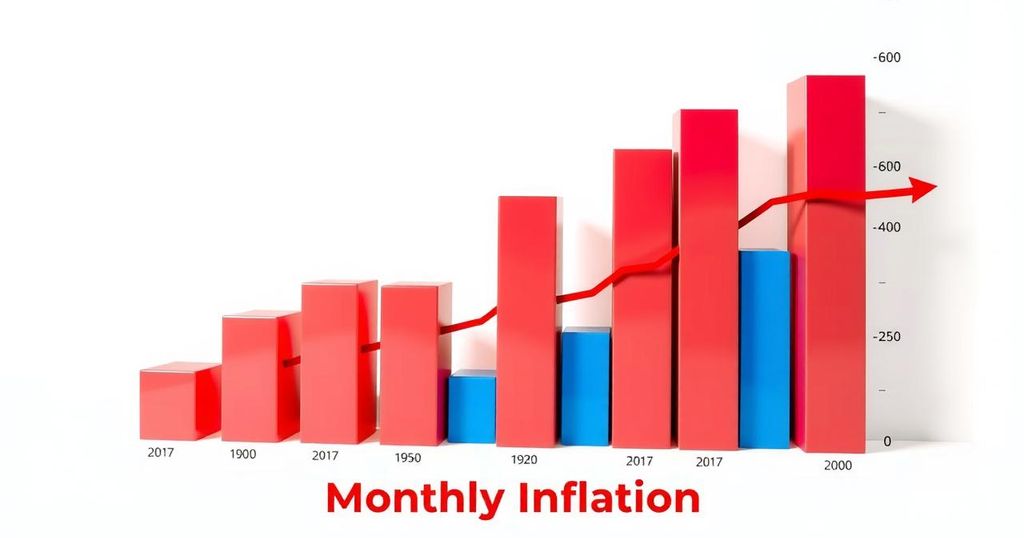In February, Argentina’s monthly inflation rose to 2.4%, aligning with expectations. Yearly inflation decreased to 66.9% from 84.5%. Under President Javier Milei, inflation has improved from nearly 300% but remains a challenge, and forecasts predict a decline to 23.3% by 2025.
Argentina’s monthly inflation rate rose to 2.4% in February, matching analyst forecasts, according to data from INDEC on Friday. This increase from January’s 2.2% confirms ongoing inflationary pressures despite governmental efforts to stabilize the economy.
The annual inflation rate through February stood at 66.9%, down from 84.5% in January, though slightly above analyst expectations reported by Reuters. The government, led by libertarian President Javier Milei, has focused on controlling soaring prices, but inflation rates have remained stagnated, oscillating between 2% and 3% in recent months.
Under Milei’s administration, inflation has significantly decreased from previously extreme levels approaching 300% early last year. However, the introduction of stringent austerity measures has incited widespread protests. To further alleviate economic pressures, the government plans to ease some capital controls.
Forecasts from analysts predict that annual inflation in Argentina, currently South America’s second-largest economy, will decline to 23.3% by the end of 2025, marking a continued downward trajectory from last year’s crippling figures.
In summary, Argentina’s inflation in February increased slightly to 2.4%, reflecting ongoing economic challenges. Annual inflation has improved from peaks of nearly 300% but remains a complex issue for President Javier Milei’s administration, which has implemented strict austerity measures. Forecasts suggest a continuing trend towards lower inflation rates in the future.
Original Source: www.tradingview.com






